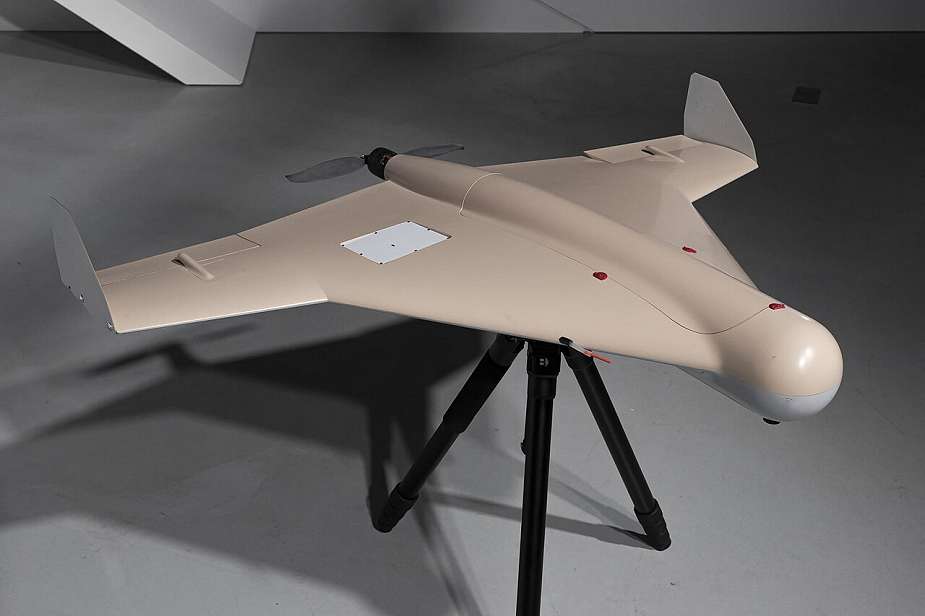Breaking news
Russia Deploys Advanced KYB 'Kamikaze Drones' in Ukraine Conflict.
On December 19, 2023, ROSTEC, the Russian State Defense Company, announced a significant delivery of KYB loitering munitions to the Russian armed forces. These munitions, intended for use against combat vehicles on the Ukrainian battlefield, are also known as KUB. They are manufactured by Zala Aero, a subsidiary of the renowned Kalashnikov Group, based in Russia.
Follow Army Recognition on Google News at this link

Russian-made Kub loitering munition is manufactured by the company Zala Aero. (Picture source Wikimedia)
Loitering munition, commonly referred to as "suicide drones" or "kamikaze drones," represents a new era in unmanned aerial warfare. Unlike traditional drones, which are primarily used for reconnaissance and surveillance, loitering munitions are designed to carry and deliver explosive payloads directly to targets. After reaching their destination, these drones self-destruct upon impact, hence their nickname. Their usage marks a shift towards more precise and targeted military tactics, as they can be deployed to eliminate specific targets while minimizing collateral damage.
The Zala KYB, in particular, has been highlighted for its tactical versatility in the Ukrainian battlefield. As a military-grade drone, the KYB can carry various weapon payloads and is capable of precision strikes based on manually set target coordinates or image-based target guidance. Its design, characterized by a distinctive triangular-winged shape and a propeller in a pusher configuration at the tail, makes it easily recognizable. The drone's electric motor allows it to travel at speeds between 80km/h and 130km/h, and its compact dimensions (1.21 m wingspan, 0.95 m length, and 0.165 m height) enable it to maneuver effectively in different combat environments.
Apart from its role in direct attacks, the Zala KYB also serves in intelligence, surveillance, and reconnaissance (ISR) missions. This multifunctional capability makes it a valuable asset in modern warfare, where information and precision play crucial roles. The deployment of such advanced technology on the Ukrainian battlefield signifies a new chapter in the conflict, highlighting the increasing reliance on unmanned systems in contemporary military strategies.
Loitering munition, commonly known as "suicide drones" or "kamikaze drones," represents a relatively recent innovation in aerial warfare technology. These are unmanned aerial vehicles (UAVs) specifically designed for targeted strike missions, combining the capabilities of both surveillance drones and guided missiles. Unlike conventional UAVs, which primarily serve reconnaissance roles, loitering munitions are equipped with explosive warheads and are intended for one-time use. They can loiter in the air for extended periods, waiting for a target to appear, and then dive down to deliver their payload with precision. This technology allows for more accurate strikes with reduced collateral damage, making them effective for targeted assassination missions, destruction of infrastructure, or neutralizing specific enemy positions.
In the context of the Russian-Ukrainian War, loitering munitions have gained notable prominence due to their tactical advantages. Both sides have deployed these systems to enhance their battlefield capabilities. For Russia, the use of loitering munitions like the KYB, developed by Zala Aero, has provided a means to carry out precise strikes on Ukrainian military assets, including combat vehicles and fortifications, without risking manned aircraft. The Ukrainian forces have also reportedly used similar technology to target Russian equipment and personnel. These drones' ability to loiter undetected and then strike suddenly makes them a formidable tool in modern warfare, especially in a conflict like the one in Ukraine where traditional air superiority is challenged and the emphasis is on asymmetric warfare tactics.
Defense News December 2023























